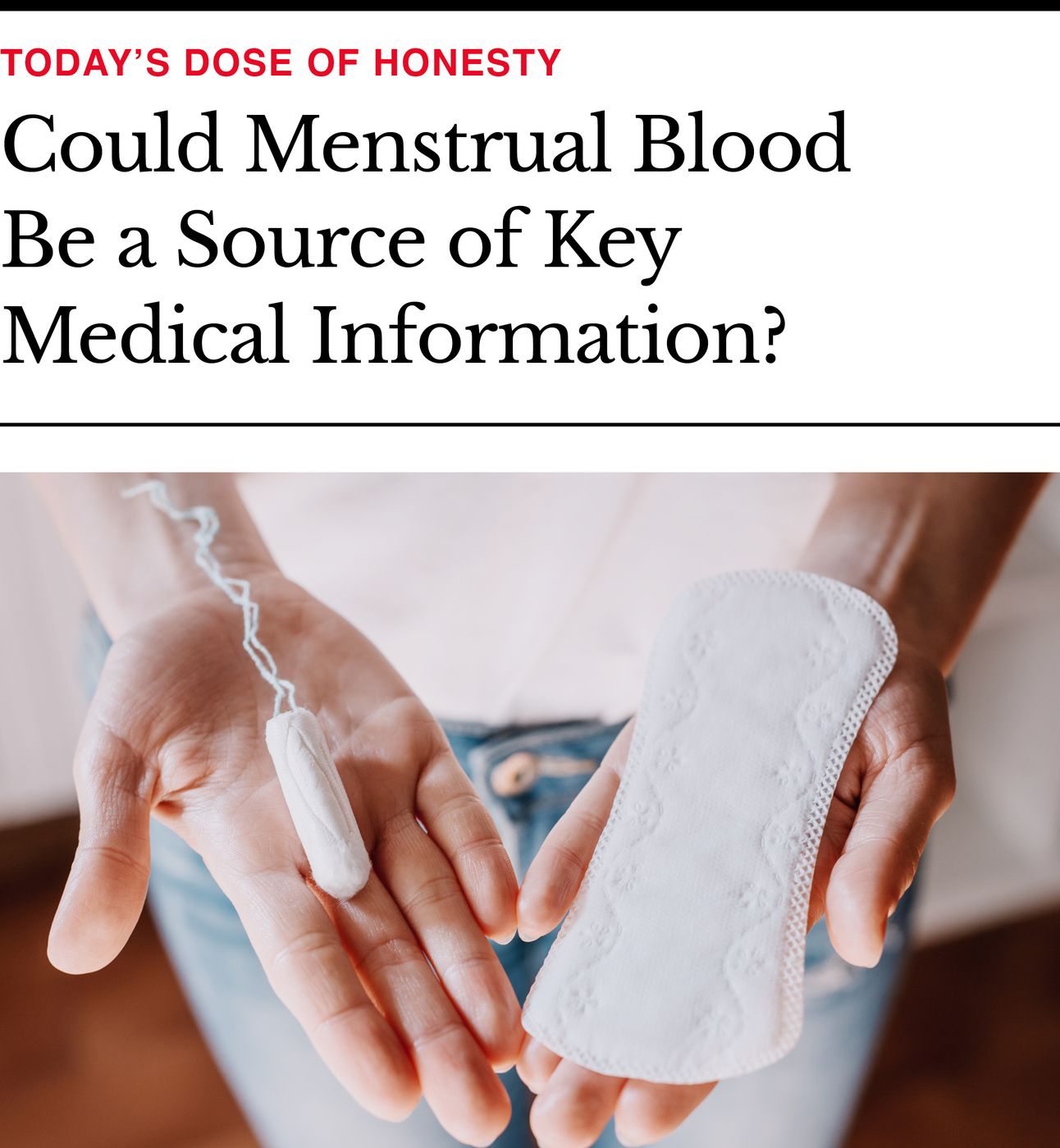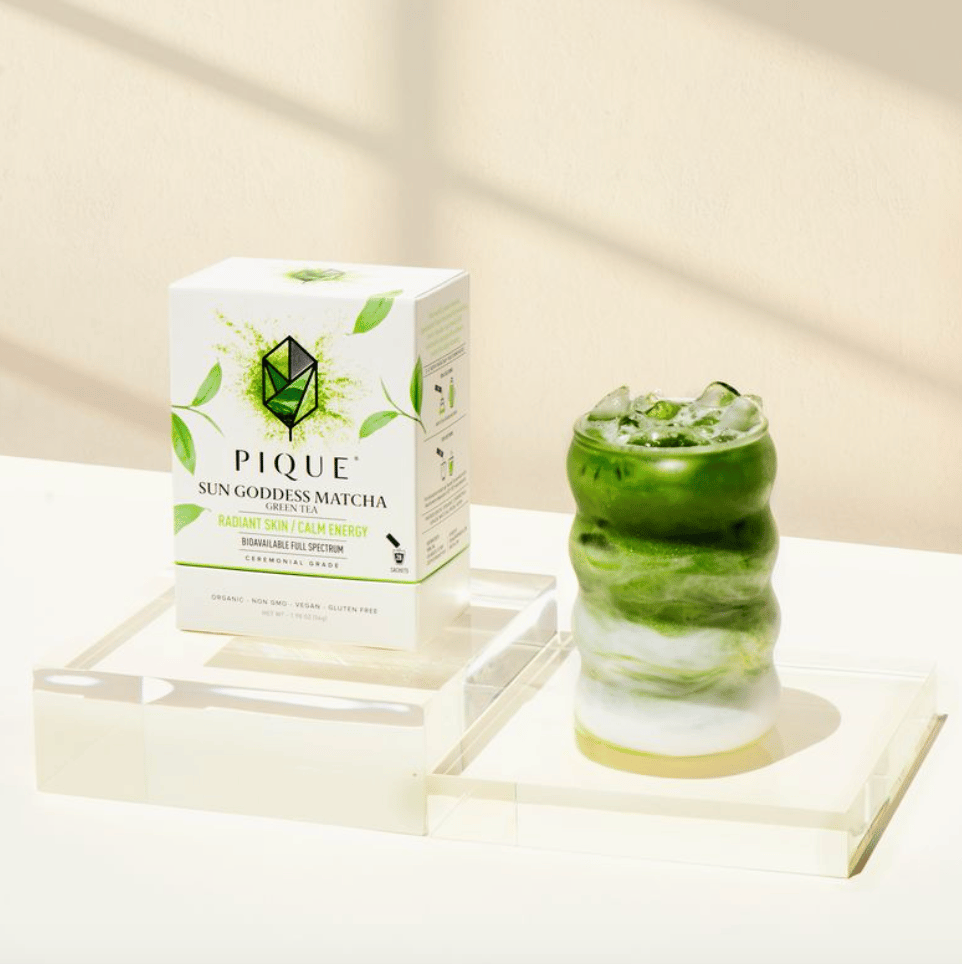- Today's Ajenda
- Posts
- TODAY'S AJENDA #69
TODAY'S AJENDA #69
Welcome to TODAY'S AJENDA!



What if one of the most overlooked opportunities in medical research was sitting in your bathroom trash can?
Every month, hundreds of millions of people get their periods, and nearly all that blood goes straight to the garbage. But menstrual blood is a treasure trove of information that could help detect endometriosis, catch cervical cancer early, and so much more.
The Goldmine That is Menstrual Blood
This isn’t some far-fetched fantasy. We already draw blood from veins to check everything from cholesterol to cancer. But menstrual blood is different from the blood drawn during a regular doctor’s appointment:
Menstrual Blood: A mix of regular blood, endometrial tissue (the lining of your uterus), cervical and vaginal secretions, and cells from your reproductive tract.
Think of menstrual blood as a window into your uterus. That’s valuable because your uterus isn't exactly a place you can “peek into” without an invasive biopsy. This inaccessibility is a big reason why reproductive conditions often go undiagnosed for years.
Endometriosis
Take endometriosis. Despite affecting roughly 10% of women, the average endometriosis diagnosis takes 4-11 years! That’s thousands of hours of unnecessary confusion, suffering, and being told to “just take an Advil” (ugh).
But endometriosis is one of the diseases that menstrual blood can detect:
Science Says: A 2020 study found that cells from the menstrual blood of people with endometriosis behave differently than those from healthy people. When researchers tested these cells, they could identify endometriosis with 92% accuracy.
Cervical Cancer and HPV Screening
There’s also the possibility of cervical cancer and HPV screening. Detecting these usually requires a Pap smear or HPV test, which means speculum, stirrups, paper gown, and a gynecologist being all up in your business.
Imagine if it were as easy as mailing a used sanitary pad:
Science Says: A 2021 study found that menstrual blood testing could accurately predict high-risk HPV status in 94.2% of patients. In some cases, it outperformed standard tests at detecting specific HPV subtypes.
This could be a breakthrough for global public health. Mailing a sanitary pad is low-cost, non-invasive, and could give millions of people access to life-saving screening.
Don’t Forget The Stem Cells
Menstrual blood is also rich in mesenchymal stem cells (MenSCs for short). They’re the same kind of stem cells found in bone marrow, fat, and umbilical cords.
From wound healing, cardiovascular repair, to neurodegenerative diseases, MenSCs are showing potential as powerful tools to repair the body.
Science Says: One review found MenSCs are easy to collect, can turn into many different types of cells (heart, brain, liver, etc), and don’t cause immune rejection.
If you’re thinking, “We’ve been flushing these out every month?” same. Only in women’s health would we have gold and barely do anything with it for decades.
The good news? We are starting to inch closer to a mail-your-pad-get-your-diagnosis future.
Qvin recently hit the market as the first FDA-approved diagnostic menstrual blood pad that can test for diabetes, uterine fibroids, STIs, and more.
There’s also NextGen Jane. This start-up is developing a “smart tampon” that collects menstrual blood and scans it for endometriosis, STIs, hormonal markers, and fertility indicators.
The Downsides of Menstrual Blood Testing
Like with anything in medicine, there’s a big ol’ asterisk. Menstrual blood is not exactly sterile or consistent. One month it’s Niagara Falls, the next it’s barely a trickle.
Plus, period blood is a biological concoction of cervical mucus, vaginal flora, hormones, and more (a diagnostic dream but a logical nightmare). The big challenge scientists have is making sure they can isolate useful information and that it’s reliable from cycle to cycle, person to person.
The Future of Menstrual Blood Testing
Don’t expect to be mailing your tampons in tomorrow. There are still lots of hurdles before menstrual testing can become mainstream:
Standardizing sample collection
Keeping samples stable during shipping
Being comfortable with the idea of mailing in our used tampons or pads (obviously)
But what seems out there now could be standard practice in a decade. Just look at how at-home genetic tests or mail-in stool kits for colon cancer. Menstrual blood diagnostics could be next, and I, for one, hope they are!
I’ll keep you updated when this science gets closer. Considering we already inspect skin, mouth tissue, saliva, teeth, and even stool, there’s no reason why menstrual blood can’t be next.
P.S. Do you know someone who would love Today’s Ajenda? Share the newsletter with them here!

Setting: beach vacation. It’s July 4th, and I’m on vacation with great friends, watching the sun melt into honey and purple rays across the sky.
Look, when you’re in a moment like this, the rules get a little flexible. So I broke my “I pretty much don’t drink anymore” protocol (can you blame me?) with half to one drink most nights we were out.
And what was I drinking? Blanco tequila.
I wanted to have a grown-up conversation with you about alcohol, specifically tequila, because the last thing you need is a doctor telling you that “alcohol is a toxin” (you know this already).
But people are going to drink. So, if you’re going to have that cocktail, let’s chat about why tequila gets the gold star for being the “least bad” option.
Why Is Alcohol Bad For You?
I say “least bad” intentionally. All alcohol is problematic to some degree. There’s no such thing as a “healthy drink” (and anyone who tells you otherwise is trying to sell you something).
Here’s Why: All alcohol is ethanol. When you consume it, your body drops everything to process it because it can’t store alcohol. The ethanol moves to your liver, where it’s turned into acetaldehyde (a known carcinogen), and then turns into acetic acid, which your body uses as a fuel source.
This toxic journey happens whether you’re drinking Veuve Clicquot, chardonnay, or bottom-shelf vodka. So when we’re talking about “better” alcohol choices, we’re really asking: Which option causes the least damage?
Why Tequila Causes The Least Damage
Tequila’s no angel. But it does have a slight upper hand on other alcohols:
It’s made from agave instead of grains. 100% agave tequila is distilled from the blue agave plant instead of wheat, barley, or corn. This makes it gluten-free and lower in congeners (byproducts of fermentation that can worsen hangovers).
Lower sugar (if sipped straight). If you sip pure tequila, you avoid the additives you’d find in cheap mixed liquors or sugary cocktails. Less sugar means less of a brutal hangover.
Think about it: A standard shot (1.5 ounces) of tequila has about 97 calories and zero carbs, fat, or protein. But a margarita? That can easily balloon to 300-500 calories once you factor in all the mixers.
Does Tequila Spike Your Blood Sugar Less?
Chances are, you’ve heard the buzz that agavins, the natural sugars in agave, can help regulate blood sugar. That’s true…if you’re a lab mouse. The study everyone references was small and done on rodents, and forgive me for stating the obvious, but we are not rodents.
Plus, those beneficial agavins don’t survive the fermentation process. By the time you’re sipping (or downing) your tequila, most of its sugars have been converted into ethanol.
Pro Tip: If you want the potential benefits of agave, try raw agave syrup. No tequila shots here.
Opt For Lighter Liquor
Blanco tequila is part of the “clear spirits” club. Along with gin and vodka, these lighter liquors usually have fewer congeners than their darker cousins (*cough* whiskey and rum).
Science Says: Research suggests that alcoholic beverages with more congeners usually cause a worse hangover than drinks with fewer.
Tequila Still Has a Cancer Risk
Tequila isn’t getting a free pass. It’s still alcohol, which the World Health Organization has classified alcohol as a Group 1 carcinogen (that’s the same category as tobacco and asbestos).
“But what if I drink ‘moderately’?” Even a few glasses a month increases your risk of cancers in the breast, esophagus, liver, colon, and more.
Science Says: A study found that 741,300 cancer cases in 2020 (about 4.1% of the global total that year) could be attributed to alcohol consumption.
My “Doctorly” Advice on Drinking Tequila
If you’re going to indulge, here’s my “doctorly” advice:
Go for 100% blue agave tequila to avoid additives.
Sip it straight on ice with fresh lime or my favorite, a slice of orange. (In my opinion, because you’re sipping straight tequila, you’ll also probably drink less because it’s not as crushable as a sweet mixed drink or glass of wine, which most of us can consume faster, and then consume MORE.)
Take it easy after, as your liver needs a break to repair the DNA damage (yes, even if you’ve just had one glass).
Hydrate before, during, and after.
On the days when I don’t drink (which is mostly every day), I don’t just have water: I also have Pique’s Sun Goddess Matcha.* This ceremonial-grade matcha is quadruple-toxin screened and full of EGCG antioxidants to help firm, brighten, and clarify the skin while your body recovers.
Unlike coffee, which can feel harsh on an already-stressed system, Pique’s Sun Goddess Matcha gives you calm, sustained energy without the jitters (or acid reflux!). I love that it supports digestion and helps my skin glow from within, all while undoing some of the damage from the night before.
I start my day with Sun Goddess Matcha and I actually do think it has helped my skin. I have had a slew of kind compliments on my skin recently, and while I do several good things for my skin, this is a big one!
While this sachet doesn’t cancel out alcohol’s effects (nor is it a replacement for a healthy diet or skincare!), it’s a gentle way to support your body’s natural recovery process after you’ve shown it…well, tequila or any other form of alcohol.
Pique is offering Ajenda subscribers 20% off when you subscribe. Get your exclusive discount right here.

Two weeks ago, Dr. Evan Garfein (Chief of Plastic Surgery at Montefiore Medical Center in NYC and my brother!) answered some of your burning questions in Today’s Ajenda.
Today, it’s his business partner, Dr. Oren Tepper's turn. Co-founder of Greenwich Street Aesthetics, Dr. Tepper is one of the world’s leading plastic surgeons in cosmetic and reconstructive surgery.
Here are your questions:
What’s the difference between a lip lift and a lip ‘flip’?
A lip flip is a non-surgical procedure in which the muscles of the upper lip are injected with neuromodulators (e.g., Botox). This gives it a slightly more turned-up appearance to the upper edge of the red part of the lip (known as the vermilion) for fuller, more defined lips.
A lip lift, on the other hand, is a surgical procedure that elevates the upper lip. The most common type is a "central lip lift,” where the surgeon removes a small strip of skin just beneath the nose. This pulls the middle of your upper lip forward to show more teeth. There’s also the "corner lip lift," which turns up the corners of the mouth to fix a downturned look.
Both central and corner lip lifts can result in a more turned-up appearance to the vermillion.
Is there help for hooded eyes other than surgery?
While some practitioners offer non-invasive treatments for upper eyelid skin excess, these results can be limited. The most effective treatment for true hooding of the upper eyelid is surgical removal of skin.
Fortunately, this procedure can be done in office under local anesthesia, and downtime can be as little as a few days.
Thank you @19beth51 for the question!
If you have had 2 revision rhinoplasties (aka ‘nose job’) and you need a 3rd because it's still not right, should you use a different surgeon for the 3rd one?
While revision surgery with rhinoplasty is not uncommon, the indications and goals for revision rhinoplasty are quite unique to each patient.
My general advice for patients seeking revision rhinoplasties (particularly for a 3rd time or more) would be to consult with multiple surgeons to obtain different opinions and approaches before considering moving forward.
Thank you to @1eyesbochic for the question.
Follow Dr. Evan Garfein on Instagram at @drevangarfein and Dr. Oren Tepper at @drorentepper. To contact their private office at Greenwich Street Aesthetics NYC, located on 497 Greenwich Street, New York, NY 10013, call 212-324-4200.

Did you enjoy Today’s Ajenda? It would mean the world if you left us a testimonial!

Dr. Jen gets asked all the time about her favorite products. We want to make sure the recommendations we share are actually helpful to you.What kinds of recommendations are you most interested in? |

ABOUT DR. JEN
In her former roles as chief medical correspondent for ABC News and on-air cohost of “GMA3: What You Need to Know,” Dr. Jennifer Ashton—”Dr. Jen”—has shared the latest health news and information with millions of viewers nationwide. As an OB-GYN, nutritionist, and board-certified obesity medicine specialist, she is passionate about promoting optimal health for “the whole woman.” She has authored several books, including the national best-seller, The Self-Care Solution: A Year of Becoming Happier, Healthier & Fitter—One Month at a Time. And she has gone through menopause…
Forwarded this email?

Missed the last issue?

Want a copy of Dr. Jen’s best-selling book?
*Note: This newsletter includes affiliate links. Sponsors may earn a commission if you purchase.







